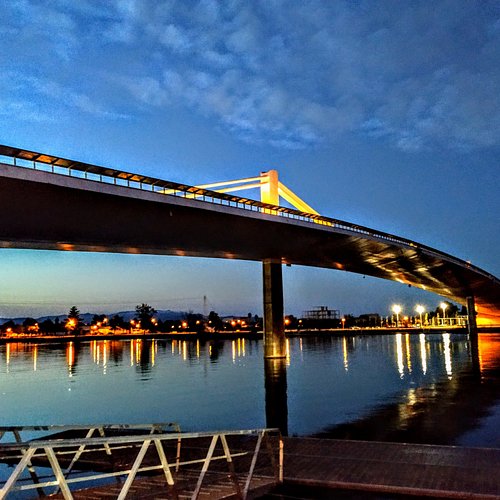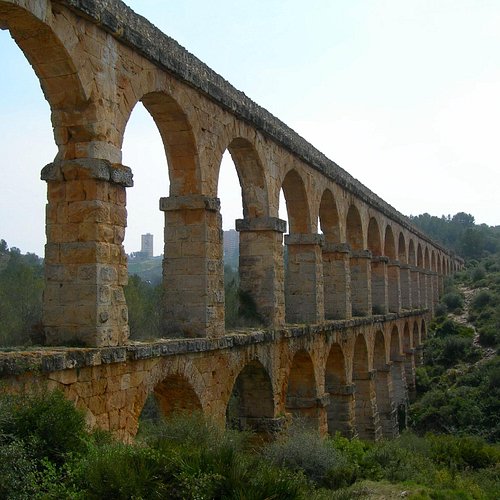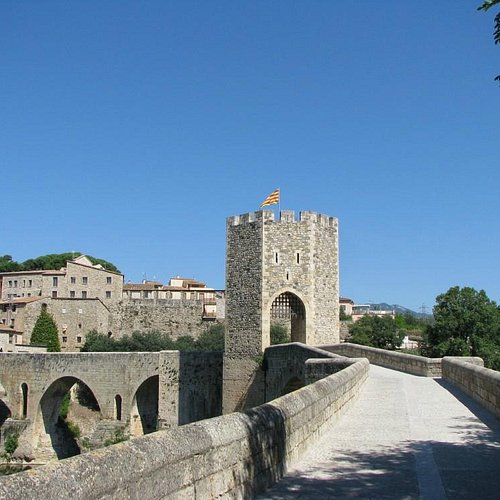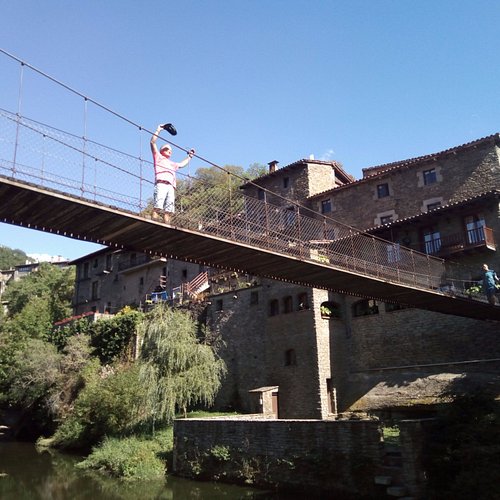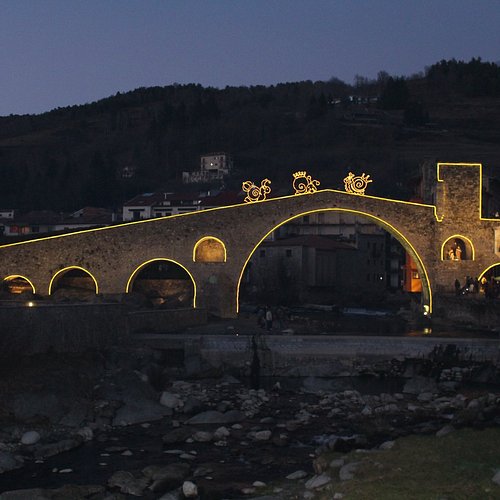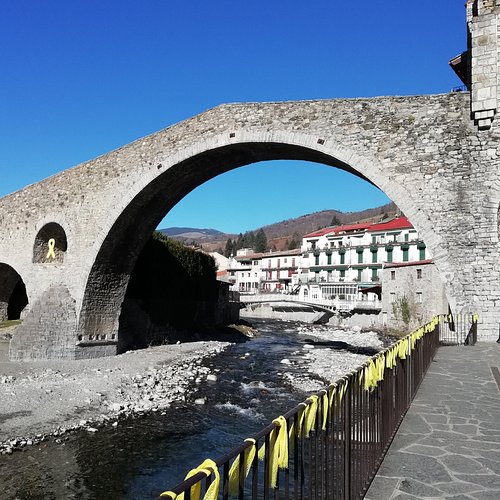Top 10 Bridges in Catalonia, Spain
– in Europe (green & dark grey)
– in Spain (green)
Restaurants in Catalonia
1. Lo Passador
2. Pont del Diable
Overall Ratings
4.5 based on 1,646 reviews
Reviewed By VadimM67 - Murmansk, Russia
The Roman aqueduct in Tarragona was my fifth aqueduct after the Valens in Istanbul, the aqueduct in Segovia, the Aqua Appia in Rome, and the famous Pont du Gard near Nimes. The aqueduct of Tarragona or the devil's bridge certainly did not get on the 5-Euro bill like the Pont du Gard, but it is the most picturesque I have seen, even if not the largest. Getting to the Devil's bridge is easy. You need to take the 5 or 85 bus on the ring at the bus station. The aqueduct Park is just 5 km from Tarragona. After getting off at the bus stop of the same name, go right for another 500 meters. And here it is: Wow! There are two things I admire most about Roman aqueducts. The ability of engineers to calculate the slope for many kilometers and the ability of builders to accurately perform it. This is the art of leading water (from Latin: aqua — water and ducere-lead).Roman engineers could determine the slope with an accuracy of 0.1 degrees — that is, 1 m of slope per 1 km of aqueduct. It is not easy to implement this in practice, so to avoid changing the angle of inclination, special reservoirs were created that accumulate and equalize water. The water trough is preserved in the aqueduct here. You can see it if you climb to the top. In fact, it was not necessary to build an aqueduct of this size. It would be possible to lay siphon pipes to the bottom of the gorge, following its profile and then lift it up to a height just below the original level. This is called a hydraulic gradient. Why did the Romans prefer to build giant aqueducts? The size is disorienting. We think if bigger and more massive means more expensive. However, pipes (lead pipes) have cost the Romans more expensive than bridges. Masonry was cheap, due to the cheapness of stone, brick, and mortar. Only if the depth of the gorges was great, the Romans stretched pipes to the bottom,and then up. In our case, the aqueduct is 27 meters high. The water was taken from the Rourell area, 92 metres above sea level, and carried more than ten kilometres The grandiose structure could not but cause mystification in the middle ages, when the Visigoths, and then the Spaniards lost the ability to build such structures. They named the aqueduct the devil's bridge, linking it with the legend that the devil will take the soul of the person who enters the bridge first. Local residents let a donkey on the bridge first... The donkey is not Faust, its soul is not interesting. Now you can walk on the bridge as you like. This is probably the most accessible aqueduct I've ever seen.
3. Bridge of Besalu
Overall Ratings
4.5 based on 1,450 reviews
Ancient bridge (11th century) with towers..
Reviewed By AndrewF31_KA - Manresa, Spain
The bridge is a magnificent work of man and the views of the bridge and from the bridge are amazing. Albeit very different, the ambience reminded me of the Latvian town of Kuldiga which as an old bridge with a long little waterfall on the river. Take a walk into the town and continue to be impressed by the architecture and wavey tight streets. There’s a lot of tourist shops and little ice cream parlours (gelaterias). One shop we enjoyed a lot was the Taller de Cuir (Pont Vell number 12, very close to the bridge) which had a lot of medieval-style articles (writing pens old notebooks, etc) and some nice non-commercial articles. You can get a map from the Tourist Office, outside of the old town across the bridge, for free, which shows you a route you can do in the town and read up on different spots. The walk along the outside of the town overlooking the river and bridge is very pleasant.
4. Castillo de Besalu
Overall Ratings
4.5 based on 199 reviews
Reviewed By DearEliza - Boston, United States
Besalu is spectacular medieval town, close to both Girona and Barcelona. Easy to spend 2-3 hours exploring, this bridge and castle was incredible. If you're in the area, strongly recommend stopping by.
5. Pont del Bisbe
6. Puente Colgante de Rupit
7. Pont Vell
8. Pont Nou de Camprodn
Overall Ratings
4.5 based on 104 reviews
Reviewed By CorruptedSanity - Abu Dhabi, United Arab Emirates
We spent a bit of time enjoying the magnificent architecture of this bridge The energy surrounding it was also very vibrant Plz give this review a thumbs up
9. El Pont Nou
Overall Ratings
4.5 based on 13 reviews
10. Eiffel Bridge (Pont de les Peixateries Velles)
Overall Ratings
4.0 based on 1,318 reviews
Reviewed By jrmbeswick
Bridge built by the famous Eiffel Tower architect. Very striking red iron with brilliant views up the river and of the colourful housing on The side.

